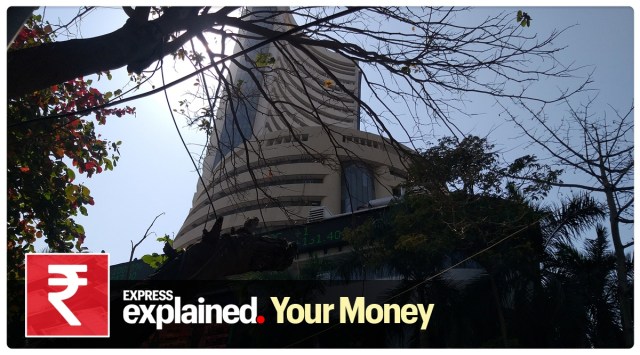© The Indian Express Pvt Ltd
Latest Comment
Post Comment
Read Comments
 On Thursday, the benchmark Sensex at BSE fell 0.5 per cent after the Fed’s indication of more hikes. File
On Thursday, the benchmark Sensex at BSE fell 0.5 per cent after the Fed’s indication of more hikes. File While the US Federal Reserve went along with the market mood and maintained the status quo at its policy meeting Wednesday, it did signal the possibility of two more rate hikes this year to counter inflation. This led to a downturn in major indexes, including Indian markets, where Sensex fell by 0.49 per cent, or 311 points, to 62,917.63 on Thursday.
Will the Fed move on interest rates and its hawkish commentary impact interest rates and markets in India?
Fed Chair Jerome Powell admitted that the effects of their cumulative tightening are yet to be seen, but insisted on further tightening. It’s becoming clear that the Fed is prepared for a growth setback if required to bring inflation down to its target. The pause Wednesday came after 10 consecutive policy tightenings, as the central bank bought time to assess the impact of the earlier five percentage points hike on the economy, especially on the inflation and labour market front.
“Though the script played to our expectations, what surprised us was a hawkish policy stance from the Fed going forward, wherein it expects a further 50 basis points hike in policy rates before the end of this year. We hope that a very hawkish pause at this policy meeting does not derail economic growth prospects, considering that transmission of policy interventions works with a long and variable lag on the varied aspects of the economy,” said Manish Chowdhury, Head of Research, Stoxbox.
The Fed has revised its inflation and growth projection upwards and its unemployment rate downwards, which means price pressures are looking sticky, the widely expected US recession has been pushed down the road, and the labour markets are displaying strength. If one goes by these estimates, the Fed now has more room and more reason to tighten. Investors should brace for volatility and probably some downside in gold prices over the next couple of months. Stubborn inflation will prevent any sharp downside in prices though, said Ghazal Jain, fund manager, alternative investments, Quantum AMC.
However, a section of the market doesn’t expect rates to go up further. “We believe that chances of further rate hikes in 2023 are slim. US Inflation at 4 per cent is already placed below its interest rates of 5.25 per cent. Inflation is clearly on its way down and the Fed won’t have to tinker with rates unless there is a nasty surprise on the inflation front,” said Apurva Sheth, head of market perspectives and research, SAMCO Securities.
The Fed’s projection of two more rate hikes later this year reinforces the perception that interest rates will remain higher for an extended period, supported by various factors. “If global interest rates continue to rise or even remain at their current levels, it is crucial to pay attention to the currency aspect. Therefore, we do not foresee any rate cuts from the Reserve Bank of India in the near term. Additionally, given the significant increase in the cost of capital and mounting risks to earnings, it is essential to approach current equity valuations with extreme caution,” said Kedar Kadam, director, listed investments, Waterfield Advisors.
The RBI had kept the policy instrument – repo rate – unchanged at 6.50 per cent in the June policy review. The repo rate has gone up by 250 basis points (bps) since May 2022 and the hike is still working its way through the system.
Regarding the Indian markets, while domestic inflation trends — retail inflation eased to 4.25 per cent in May — are indicating a potential cooling off, uncertainties surrounding the monsoon and a comparison of equity valuations with other emerging markets introduce additional risks. “We anticipate an upward risk to domestic inflation, but only time will reveal the true extent,” Kadam said.
On Thursday, the benchmark Sensex at BSE fell 0.5 per cent after the Fed’s indication of more hikes. The indication came as a dampener for the Indian equity markets as a continued rise in interest rates in the US may not only stall inflow of funds into Indian equities, but may also lead to some outflow from emerging markets to US treasury bonds.
Experts, however, feel that the Indian markets would be more driven by domestic strength. Given that inflation has softened, the GDP growth rate is projected at 7.2 per cent for the year ended March 2023, and is set to stay strong going forward, investors should take medium to long term positions in equities.